Gdańsk
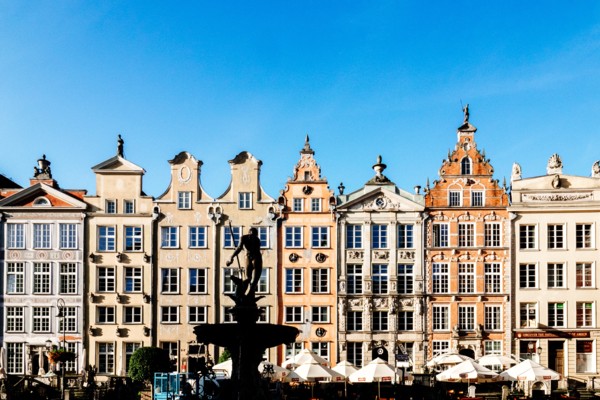
From Długi Targ in Gdańsk. Forrest Neptune statue (fountain). – Photo by Andrea Anastasakis on Unsplash
Distance
517 km SE, 395 km SE, 100 km SV, 167 km S, 88 km SV, 123 km SV, 98 km SV, 135 km SV, 173 km NV, 58 km SE, 17 km NV, 171 km SE, 120 km S, 131 km SE, 154 km NV, 36 km V, 224 km V, 59 km SV, 197 km V, 101 km SE, 38 km E, 108 km NV, 75 km NV, 57 km SE, 138 km SV, 209 km V, 110 km SE, 131 km, 703 km SE, 156 km SE, 130 km SE, 12 km S, 44 km NV, 40 km NV, 120 km NV, 13 km NV, 55 km S, 341 km SV, 366 km SV, 79 km SE, 41 km SE, 181 km S, 138 km NV, 339 km SE, 52 km NVThe local area: Kościerzyna 59 sv, Kartuzy 35 v, Żukovo 22 v, Rumia 40 nv, Reda 44 nv, Wejherowo 52 nv, Puck 59 nv, Władysławowo 68 nv, Sopot 13 nv, Gdynia 17 nv, Jastarnia 87 n, Hel 101 n, Stegna 35 island, Sztutowo 39 island, Nowy Dwór Gdański 41 lake, Sztum 79 Sun, Malbork 57 Sun, Tczew 41 Sun, Pruszcz Gdański 12 s, Starogard Gdański 55 s.
Population
456.600 (2007)
Location and history
Gdańsk is located in northern Poland, on the Baltic Sea, ie. at Gdansk Bay. Gdańsk is the southernmost of the cities of the so-called Trójmiasto (Tre city), ie. the three closely related cities: Gdańsk, Sopot and Gdynia. The green area west of the three cities and east of the north-southbound highway / highway is laid out as a landscape park: Trójmiejski Park Krajobrazowy. The city is built on the river Wisła at its outlet in the Gdańsk Bay (Martwa Wisła) and at the outlet of the Motława River in Wisła.
Gdańsk is the main city in eastern Pomerania (Pomorze Gdańskie). The city has approx. 456,000 inhabitants, making it the sixth largest city in Poland. Following the workers' protests in Gdańsk in December 1970 that were suffocated in blood, the strikes in August 1980 at the Gdańsk shipyard and other companies in the area led to the creation of the first free trade union movement within the Soviet empire: NSZZ “Solidarność” (“solidarity”), which in turn contributed to the abolition of communism and Poland's recovery of independence in 1989. The liberation soon followed in the other eastern European countries. In Gdańsk, the dismantling of the communist system began.
The city is the seat of the NSZZ Country Office “Solidarność” as well as several colleges, including a university and a polytechnic. Gdańsk is a major economic and cultural center that houses many European special tourist attractions.
The city's current name Gdańsk can be traced back to Old Slavic Gdansk; the Benedictine monk Jan Kanapariusz in 999 referred to the city as Gyddanyzc urbs, a form that also goes back to Gdaniesk; in other Latin documents the town is referred to as Gedania / Gedanum or Dantiscum; in the local Slavic minority language, Kashubian, is called the city of Gduńsk; in German, the city is known as Danzig.
The city's airport is called Port Lotniczy Gdańsk im. Lecha Wałęsy (named after the former president). The airport is located near the village of Rębiechowo at ul.Słowackiego 200, ie. west of Gdańsk (and west of the highway). Gdańsk is 12 km from the airport. There is a direct bus service to the main train station in Gdańsk.
The first information about Gdańsk in the historical chronicles is dated March 27, 997, a time which is consequently considered the city's date of birth. From its inception, Gdańsk has maintained numerous contacts with several nations due to its location. Here, the trade routes intersected between northern and southern Europe, between east and west. In 1361, Gdańsk became a full member of the Hanseatic League, the trade association of northern European cities. The Hanseatic cities worked within the Union for Equal Rights, Common Units of Rules and Currency, Mutual Reduction of Taxes and Joint Combating of Competition. The city association was also founded to better ensure that trade and transport were carried out without obstacles from pirates at sea and road robbers ashore.
The privileges granted to the city by the Polish king, Kazimierz Jagiellończyk, together with its natural hinterland connections, the vast river basin of the Wisła River, created in Gdańsk a city that was said to be Europe's grain chamber.
In the 15th and 16th centuries, Gdańsk Europe was born. Every year between February and November, over 2,000 ships entered the city's port to pick up goods arriving there by river from inland Poland. At this time, also known as the Golden Age of the city, passed approx. 75% of all Polish exports through Gdańsk. 300 multi-storey warehouses were filled with Polish grain, which Europe was waiting for. The total length of the dock quays exceeded the length of the quays in London. The crane in the port of Gdańsk – today one of the most popular elements of the cityscape – existed in the 19th century. the largest port crane in Europe.
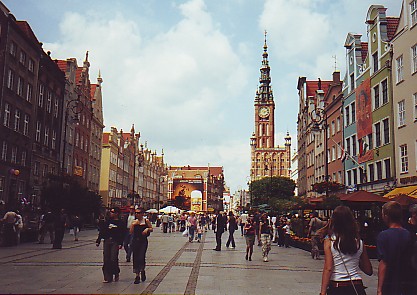
From Długi Targ in Gdańsk
It was also here in Gdańsk, in September 1939, that the hell of World War II began, a war that was to realize Hitler's crazy plans to transform Europe and the half-world into a “thousand year” Third Row.
During the city's prosperity there lived here Germans, Poles, Dutch, Flemish, Scots, Englishmen, Scandinavians, Russians, Czechs, Slovakians, Hungarians, Frenchmen and Italians, who together created a multicultural urban community.
After World War I, the Treaty of Versailles decided that Gdansk should be a sanctuary (an autonomous urban area), yet sharing customs territory with Poland. Already in 1920, conflicts arose between the city government and the Polish authorities and a subsequent economic conflict with the Polish state. Consequently, Polish exports were subsequently directed outside Gdańsk itself and via the specially built port of Gdynia.
World War II was a disaster for the city and not least for the historic city center. It was a long-running tragedy that began with the Allied air strikes in June 1942, continued with street battles in March 1945 and devastation caused by the victorious Red Army and ended with the effects of the autumn and winter storms of 1945-46.
At the end of the war, as the front approached, the majority of the city's inhabitants fled. Back in the city, there were mainly elderly people, women and children. During the first few years after the war, they were also transferred to Germany. An almost complete replacement of the population took place. A few thousand people, namely the Polish population of the city remained in Gdańsk. In the German population, people arrived from the former Polish eastern regions as well as from Pomerania and central Poland.
Just after the war, it was not yet decided whether to rebuild the city center in its historic form or create a whole new city. Fortunately, the position prevailed that one should restore the city in its historic form.
Tourist attractions
The main town hall (Ratusz Głównego Miasta; ty .: Rathaus der Rechtstadt )
This town hall building is the most outstanding and valuable, worldly building in the inner city, originally the seat of city authorities. The town hall was built between 1379 and 1492.
After the Crusaders caused great destruction to the city in 1308, normal life began again and was promoted by the special rights granted to the city by the Crusaders' Grand Master, Winrich von Kniprode, in 1378. The first phase of the building of the town hall was between 1379 and 1382. The next construction period was in the years 1454-57, during which period the city was visited by the Polish king, Kazimierz Jagiellończyk. The king reaffirmed the privileges of the city to date and ordered that a crown be added to the arms of the city.
The building's 80 meter high tower is equipped with a helmet roof, created by master Dirk Daniels; taken crowned by a gilded metal statue of King Zygmunt August. The three wings around the present farm were completed in the years 1593-96.
Towards the end of the 16th century. the building was decorated with a sundial, bearing the Latin sentiment:“Umbra sits this close” (A shadow is our days). City Hall burned down in 1945; its reconstruction was completed in 1970. The building is now the seat of the Gdansk Historical Museum.
The interior of the house is kept in the style known as Dutch mannerism. The most beautiful space is the Great Council Hall, also called the Red Hall, which is considered one of the most outstanding examples of city hall interiors of recent times. The decoration of the hall is due to such masters as Hans Vredeman de Vries, Izaak van den Blocke and Simon Herle. The hall's ceilings are adorned with 25 images of Izaak van den Blocke of symbolic character. The most famous of these is “Apoteoza Gdańska”.
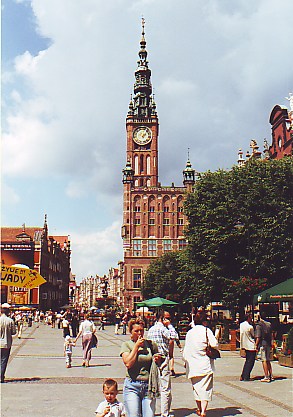
Długi Targ with the main town hall in the background
Old Town City Hall (Ratusz Starego Miasto; Ty: Rathaus der Altstadt)
was built in the years 1587-95 by Antoni van Opbergen. The building is an example of good, manneristic Flemish architecture. Inside are the allegorical images from the 17th century. conserved; the pictures on the walls are due to an artist from Gdańsk: Adolf Boy, while the pictures in the ceiling are from the Silesian artist Herman Han’s workshop. The building is now the seat of the Baltic Cultural Center.
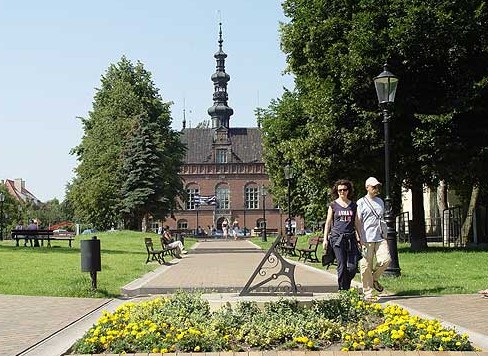
Old Town City Hall. – Source: www.gdansk.pl, Urząd Miejski w Gdańsku .
Ulica Długa and Długi Targ (“Langegade” and “long Torv”)
lying next to each other is one of the most beautiful streets in Gdańsk. The streets extend perpendicular to the Motława River from Złota Brama (Golden Gate) to Zielona Brama (Green Gate). This is where the city's wealthiest citizens lived, and almost every house has its own interesting history. The oldest preserved houses date from the Middle Ages, but most buildings are from later centuries. The houses in Długa Street are typical Gdańsk narrow-façade houses, crowned with front or combed gables.
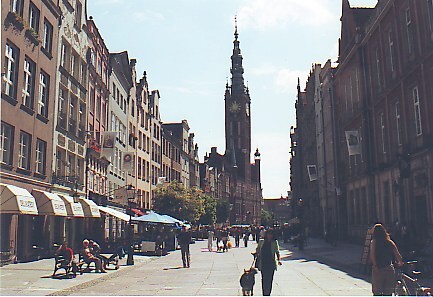
Ul.Długa seen to the east, towards the town hall
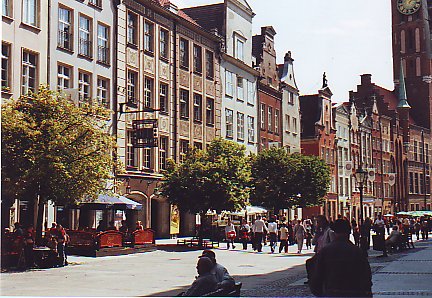
Lot from the north side of ul.Długa, on the right is the town hall
Brama Zielona (The Green Gate)
Through the archways of Brama Zielona, pass from Długi Targ to the shores of Motława. Before this representative building was erected, at this site stood the oldest gate in the city, the Koga Gate of the 14th century. In the years 1564-68 the old gate was demolished and instead – in the years 1568-71 – the present magnificent, mannerist building was erected. The construction of Brama Zielona was led by Regnier of Amsterdam and Hans Kramer of Dresden and the building was built as a guest house for visiting heads of state.
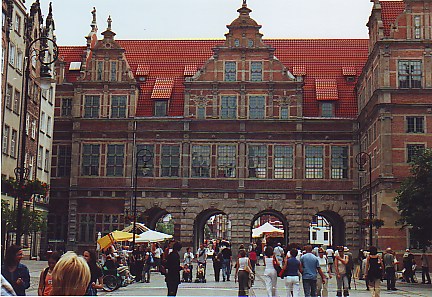
Brama Zielona
Brama Złota (The Golden Gate)
was built in the years 1612-1614 in the Renaissance style and after drawing by Abraham van den Blocke. The stone sculptures that adorn the building are made by Piotr Ringering and are allegorical representations of the virtues, justice, piety and unity of the citizen virtues.
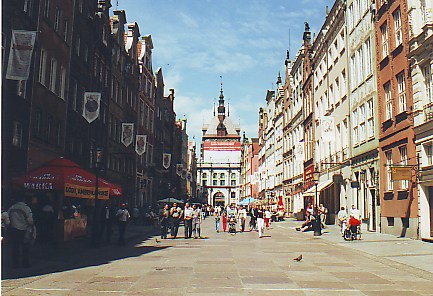
Ulica Długa facing west towards Brama Złota and behind this Prison Tower (Wieża Więzienna)
Brama Wyżynna (Highland Gate).
At this gate begins the so-called “King's Road”, which continues in – and especially consists of – the streets of Ulica Długa and Długi Targ and ends at Brama Zielona. The construction of the gate was led by Hans Kramer of Saxony, and it was built as part of the new fortifications erected in the years 1574-76 along the western border of the city. The gate was given its present form by a remodeling in 1588, led by Flemish Countess Willem van den Blocke.
Wielka Zbrojownia (The Great Clothing House / Arsenal)
A growing threat of war on the part of Sweden caused the town's citizens to prepare by building an arsenal for the storage of military equipment. The building was built in 1602-1605, designed by a famous local architect of the time, namely Antoni van Opbergen, and built of red Dutch bricks, adorned with decorations made of sandstone and rich gilding. Wielka Zbrojownia is located on ul.Tkacka but with a facade facing and overlooking Piwna Street.
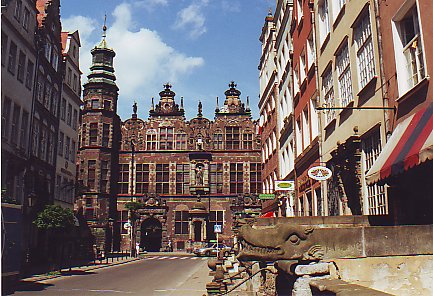
The western end of ulica Piwna with Wielka Zbrojownia
Uphagen’s house . Ul.Długa 12.
The building, which now houses a section of the Historical Museum of the City of Gdańsk, was purchased in 1775 by Johann Uphagen (1731-1802), a well-known merchant and councilor. He hired the architect Johann Benjamin Dreyer to undertake a radical overhaul. In October, 1779, he moved into the new house with his family. The interior work, however, took several years and it was not until January 1787 that Uphagen could receive guests in his salon. Uphagen stayed in the house until his death. In 1981, the house was turned over for museum purposes as part of the city history museum. In June 1998, the house became accessible to visitors. Uphagen’s house is a testimony to the city's heyday. In its time it was one of many splendid townhouses; today, it is the only thing that as a tourist can be seen to give an impression of civic interiors from the end of the 18th century.
About Artusa (Artus Court). Długi Targ 45
The building is originally from the 14th century, but after a fire it got its present design in 1477. The facade was rebuilt by Abraham van den Blocke. The manneristic portal is adorned with medallions with royal portraits. a huge, 12-meter-high Renaissance-style tile stove, a work by Georg Stelzener from the mid-16th century, decorated with tiles, painted by the master Jost, depicting contemporary European rulers, their weapons, personalized virtues, etc. The building was the meeting place for the city's first citizens.
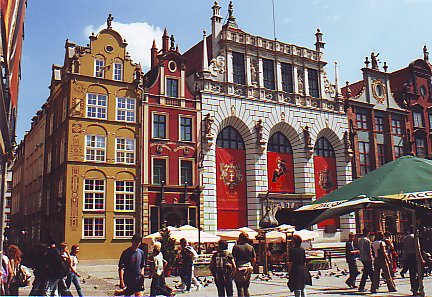
Artus Farm (Dwór Artusa) on Długi Targ
Złota Kamienica (The Golden House). Długi Targ 41/42.
is one of the most beautiful buildings in Gdańsk. The current house was built for grocer and Mayor Jan Speymann. It was erected before 1609 by drawings by Abraham van den Blocke, who was also the master of some of the sculptures that adorn the building, the completion of which is around 1618. The fame of the house is mainly due to the beautifully designed facade.
Neptune Fountain (Fontanna Neptuna). Długi Targ,
standing on Długi Targ in front of Dwór Artusa since 1633, has become a symbol of Gdańsk. The fountain initiator was Mayor Bartłomiej Schachmann. The Neptune figure symbolizes the city's connection to the sea. The figure was modeled by Peter Husen and Johann Rogge, and it was cast in Augsburg in 1615. The entire fountain system was designed by Abraham van den Blocke.
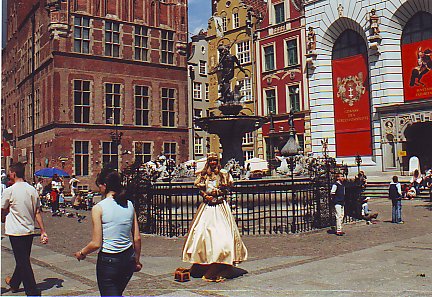
Neptune Fountain on Długi Targ
Maria Street (Ulica Mariacka)
is undoubtedly one of the most beautiful streets in Gdańsk. Ulica Mariacka runs from the Maria Church (Kościół Mariacki) to the street Długie Pobrzeże, which runs along the river Motława. Before Długie Pobrzeże, the street ends with the medieval (c. 1485) Mary Gate (Brama Mariacka). The street is an excellent example of the former style of construction in Gdańsk with special staircases and narrow, richly decorated house facades. The houses were once owned by rich merchants and goldsmiths. The street's scenic scenery has for centuries inspired writers and painters and also formed the backdrop for film footage.
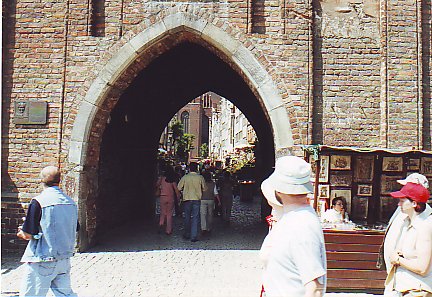
The doorway of Brama Mariacka (Mary's Gate) as seen from Długie Pobrzeże along the river
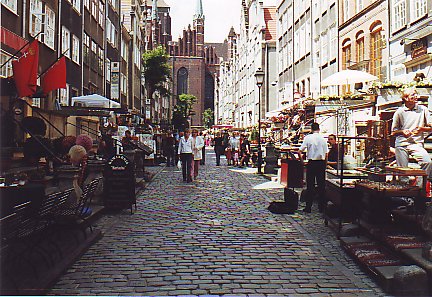
Ul.Mariacka viewed towards the Church of Mary
Długie Pobrzeże
is a pedestrian street that extends along the Motława River, where you will find a number of ancient Gothic gate buildings: Brama Krowia (Cattle Gate) from the 14th century, Brama Chlebnicka (Bread Gate) from the 15th century, Brama Mariacka (Maria gate) from the 15th century. and Brama Św.Ducha (Holy Spirit Gate) as well as the famous harbor crane (Żuraw).
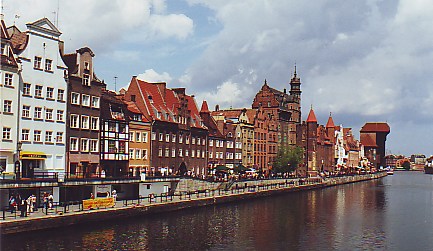
Długie Pobrzeże street seen from Zielony Most (The Green Bridge)
The crane at Motława (Awuraw nad Motławą)
which fulfilled two functions: as port crane and as urban port, got its present design in 1442-1444. In the interior of the building is a huge wheel of wood that was driven by manpower. The crane was not only used for loading and unloading, but also for raising ship masts. Today, the crane is one of the best known and most photographed motifs from Gdańsk.
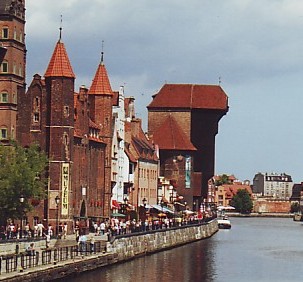
At Motława. TV. the Brama Mariacka gate building flanked by two towers, the central crane building
The Great Mill (Wielki Młyn)
was built in the middle of the 14th century. at the Radunia Canal and was the largest of the Crusaders' investments in Gdańsk. The building connected three functions: like mill, warehouse and bakery. The mill was equipped with 18 water wheels; each wheel measured 5 feet in diameter. The mill was a very big technical achievement in its day.
Maria Church (Kościół Mariacki)
there is one of the largest brick churches in the world, emerged in several building stages in the years 1343-1502. The length of the church is 105.5 meters and the width is 66 meters. The height of the tower is 77.6 m. The church contains several excellent works of art from the Middle Ages and the Baroque period. a pietá in stone from approx. 1410, a copy of “The youngest court”, a painting by Hans Memling from 1472, an astronomical clock made in 1464-1470 by Hans Düringer and the main altar, dating from 1510-1517.
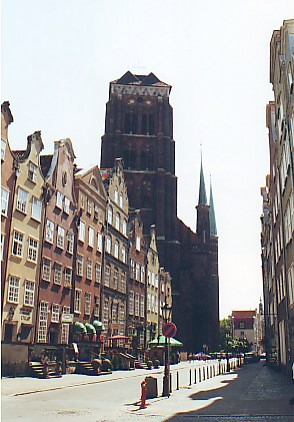
Ulica Piwna and the Church of Mary
The Royal Chapel (Kaplica Królewska)
The chapel was founded on the initiative of King Jan III Sobieski and was to serve as a temporary house of worship for Catholics in St. Mary's Parish, where Protestants were dominant at the time. The building was built in 1678-81 by architect Barthel Ranisch after drawing by royal architect Tylman van Gameren. The Baroque sculptures on the facade were created by Andreas Schlüter.
prison Tower and torture chamber are two impressive Gothic buildings from the Middle Ages. The interconnected buildings lie between the Highlands Gate and the Golden Gate. The torture chamber with the executioner's residence was rebuilt in 1593 by Antoni van Opbergen, while the prison tower was elevated and given its present appearance in 1508-09.
Saint Nicholas Church (Kościół św. Mikołaja)
which is the oldest church in Gdańsk, was erected at the end of the 12th century. In 1227, the Pomeranian prince, iwiętopełk, handed over the church to the Dominican Order. A monastery building was added around 1348. As the only one, this Gothic building avoided the destruction caused by acts of war. The tower was elevated in the 15th century. In the interior of the church is a rich early Baroque style equipment.
The Victims Memorial of December 70 (Pomnik Ofiar Grudnia 70)
which stands at the entrance to the yard in Gdansk and is dominated by three large crosses (42 meters high), is a memorial to the yard workers killed during the 1970 strike.
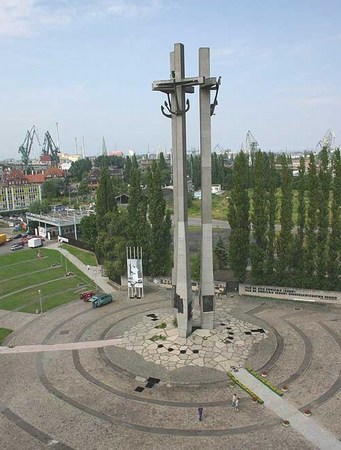
The memorial for the yard workers killed in 1970. – Source: www.gdansk.pl, Urząd Miejski w Gdańsku
The Central Maritime Museum (Central Muzeum Morskie)
The main task of the museum is to elucidate and document the development of Polish shipping, both technical, cultural and other aspects.
The Archaeological Museum (Muzeum Archeologiczne)
The main task of the museum is to preserve and research archaeological issues, especially in the Gdańsk area.
The national Museum (Muzeum Narodowe)
by ul.Toruńska is housed in the building of the former Franciscan monastery; from 1558-1817 the building was home to the Academic Gymnasium and then to the City Museum. The National Museum has, among other things, collections of Gothic painting and sculpture, painting in Gdańsk in the 16th-17th century. and crafts in Gdańsk.
Westerplatte
On 1 September 1939, the Polish fortified military depot on the Westerplatte peninsula in Gdansk was attacked by German forces; the attack that began World War II began with the firing of Westerplatte from the German warship “Schleswig-Holstein”. The Polish soldiers on Westerplatte lasted for 7 days before surrendering. In 1966 a memorial was erected on the spot.
Oliwa :
On 1 July 1926 the Oliwa locality was incorporated in the city of Gdańsk.
The Monastery of Oliwa
The first mention of the place name Oliwa concerns the founding of the Cistercian monastery in 1186. At that time, the monks were granted several settlements, including Oliwa, by the Pomeranian prince Sambor I.
The abbey of Oliwa emerged as a monastery of the Clairvaux line. Oliwa was the daughter monastery of the monastery in Kołbacz (founded 1173), which in turn was the daughter monastery of Esrom (Esrum) monastery in Denmark (founded 1153).
Thus, for centuries, Oliwa became a monastic village.
In connection with the founding of the monastery, a group of Cistercians from Kołbacz arrived in Oliwa. The group was led by Dane Bernard Dithard, who also became the first abbot in Oliwa. The monastery in Kołbacz (whose mother monastery was Esrom in Denmark) was still too young and too small to independently send large numbers of monks to the new monastery; therefore it is likely that the majority of the monks came from Denmark.
Cistercian
Oliwa Cathedral (Cathedral of Oliwska)
is dedicated to the Holy Trinity, the Virgin Mary and Saint Bernard and was listed as the Cistercian Order of God in the 13th century. After a great fire in 1350, the church was rebuilt in Gothic style and has continued without major changes until today. The church is a wooden ship and built over a cruciform shape. The building is 107 meters in length and thus the longest church in Poland. The church's furniture was destroyed by a fire in 1577; what can now be seen stems from the Baroque era.
Oliwa organ: The cathedral is not least adorned by the magnificent rococo organ from 1763-1788. At the time of construction, the organ was the largest of its kind in Europe. The building of the great organ in the abbey church is associated with the then abbot Jacek Rybiński’s name. He was instrumental in creating a choir and an orchestra at the monastery, and by extension a decision was made in 1748 to build a new organ. In 1758, the first of the organ builders, Jan Wilhelm Wulff of Orneta, arrived.
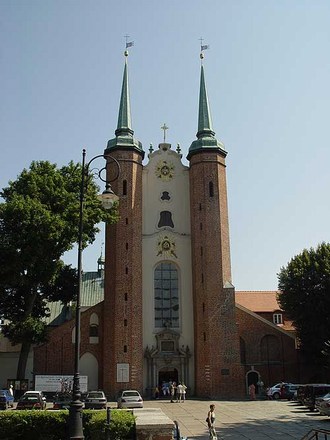
Oliwa Cathedral. – Source: www.gdansk.pl, Urząd Miejski w Gdańsku
The abbot's mansion (Pałac Opatów w Oliwie)
The building now houses a section of modern art under the National Museum.
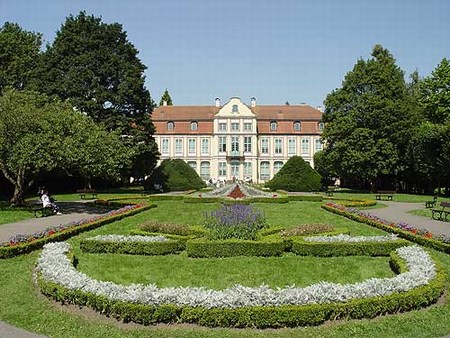
The abbot's mansion. – Source: www.gdansk.pl, Urząd Miejski w Gdańsku
Oliwa Park
The present Park Oliwski emerged in the 18th century. in the area where the former monastery garden was located. In the park you can see plants brought here from almost all over the world. You can also admire the alpine, orangery etc.
Surrounding Area
Area attractions, see among others:
Sopot
Gdynia
Kartuzy
Crusader castles and bishopric castles in northern Poland
Accommodation
Booking.com
Gdańsk (Official city council page. – In Polish, English, and German) – With practical information for tourists
Eating Out:
Gdańsk (Official city council page. – In Polish, English, and German) – With practical information for tourists
Other Internet sites and sources
Gdańsk (Official site of the city council. – In Polish, English, and German)
Trojmiasto: Gdańsk, Sopot, Gdynia
Other cities in Trojmiasto:
Sopot (Polish, English, German, French, Russian)
Gdynia (Polish, English, German, Swedish, Danish, French, Russian, Spanish)
Gdańsk. Plan miasta. Scale 1:15 000. PPWK, 1997.
Trójmiasto. Plany miast.
Poland. Gdańsk, Sopot, Gdynia. Warsaw, POT, 2004.
Translated into English by Google Translate. Spangshus.dk accept no liability for any errors or omissions in translation.
Map

Rating
Search
Most used tags
churches (205) Castles (86) Monasteries (79) Town walls (74) Lakes (71) Town halls (67) Rivers (65) Castles1 (62) Mansions (55) Museums (51) Regional museums (38) Town gates (36) Abbey churches (35) Castle ruins (30) Cathedrals (26) Forests (25) Health resorts (24) Water sports (23) Mounds (23) National parks (22)Click for all tags
Denne side er også tilgængelig på dansk. This page and contents is (c) Copyright 2018- www.spangshus.dk. Based on Inviator software by ISCA Software